The 20 Best Things to Do in Mexico City (Updated 2024)
Posted: 2/19/24 | February 19th, 2024
Mexico City is the fifth largest city in the world, a sprawling metropolis where history and culture converge in a dynamic tapestry of bright colors, diverse cuisines, and lively districts.
I love it here. I’ve been a handful of times and never get tired of exploring and eating my way around the city. I always have an amazing time. In fact, I love the city so much I even ran tours here (and every single person I showed around was blown away). No one hates this place.
Unsurprisingly, in a city so large and with such a long history, there’s a ton to see and do here, from visiting world-class museums to feasting at tiny taco stands to exploring offbeat neighborhoods. You could easily spend a week here and not even scratch the surface.
Here are what I think are best things to do in Mexico City so that you can have fun and really get to know the city and culture on your trip to this vibrant capital!
1. Take a Walking Tour
Walking tours are an excellent way to learn a destination’s history and avoid missing any must-see stops. I always start my trips off with at least one walking tour as it’s the best way to get the lay of the land and connect with a local guide that can answer all your questions.
Estación Mexico Free Tours and the Monkey Experience both have a free historic downtown tour that can show you what the city has to offer. The former also offers four other free tours of different neighborhoods too. Even though the tours are technically free, always remember to tip your guide at the end!
For more walking tour recommendations (including paid options), check out this post.
2. Visit the Museo Nacional de Antropología
Found within Chapultepec Park, this world-class anthropology museum is the largest museum in Mexico (it’s also the most visited, receiving over two million guests per year). Since 1964, it has housed the largest global collection of sculptures, jewels, and artifacts from ancient Mexican civilizations. The different time periods are grouped into comprehensive (and massive) exhibition halls with bilingual information signs, so be sure to give yourself ample time to explore it all. There’s a beautiful courtyard in the center where you can sit and people-watch for a bit.
Av. P.º de la Reforma s/n, +52 (55) 5553-6266, mna.inah.gob.mx. Open Tues-Sun 9am-6pm. Tickets are 95 MXN. Guided tours of the highlights start at 375 MXN (includes admission).
3. Tour Frida Kahlo’s House
Frida Kahlo and her husband Diego Rivera are two of the biggest names in Mexican art. Frida was particularly famous for her portraits and self-portraits. A tour of their old home (“Casa Azul”) is a worthwhile experience to see where and how she lived, as well as some of her original artwork. It’s a really interesting house with a beautiful garden and lots of information about her life. The residence also hosts a variety of artistic workshops monthly, so check out the schedule if you’re interested.
This guided tour of Coyoacán (the surrounding neighborhood) includes a ticket to the museum, which you’ll visit at your own pace after learning about the area in which the two artists lived and worked.
Londres 247, Del Carmen, +52 55 5554 5999, museofridakahlo.org.mx. Open Tues-Sun 10am-6pm (Wednesdays at 11am-6pm). Tickets are 250 MXN (270 MXN on the weekends). You must buy your tickets well in advance (at least a month out), because they are in incredibly high demand.
4. Attend a Lucha Libre
Mexican “free wrestling” is a favorite national pastime. Extremely entertaining and affordable, lucha libre takes the sport to a whole new level. Grab a beer or a shot of tequila, and whatever you do, do not look away during a match as anything can — and will — happen. (Do not bring your camera though, as you will be forced to check it at the door.)
Arena México and Arena Coliseo are the main places to see a match. General seating tickets can be as little as 56 MXN (do not buy from scalpers, because the police are always around and you’ll get in trouble). Look for a taquilla (ticket booth) sign to be sure that you are paying the right price.
Guided experiences, like this lucha libre experience, are also available. During the match, you’ll enjoy a mezcal tasting and munch on chips and guacamole, and at the end, you’ll leave with your very own lucha libre mask.
Arena México: Dr. Lavista 189, +52 55 5588 0266, cmll.com/arenas/arena-mexico. Shows on Fridays at 8:30pm, Sundays at 5pm, and Tuesdays at 7:30pm
Arena Coliseo: República de Perú 77, +52 55 5588 0266, cmll.com/arenas/arena-coliseo. Shows on Saturday nights at 7:30pm.
5. Day Trip to Teotihuacán
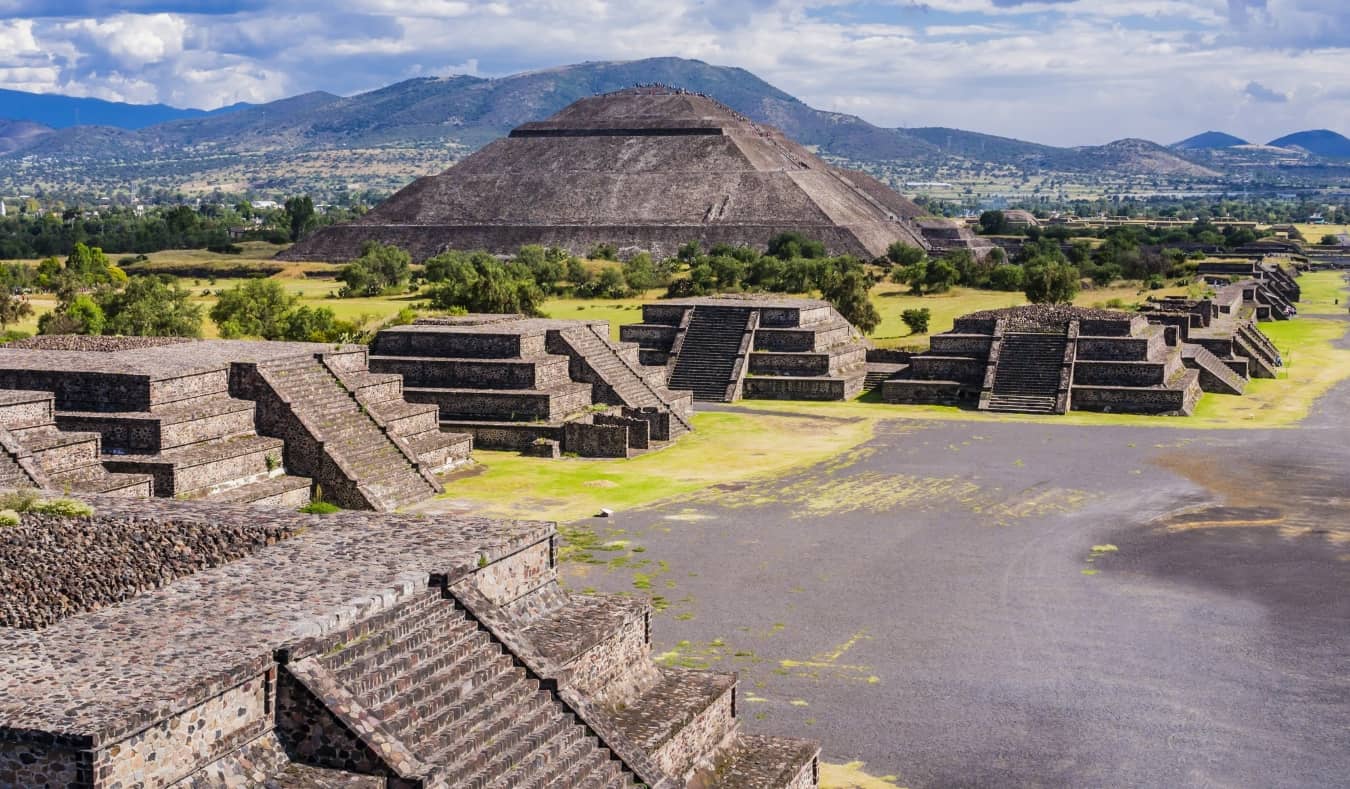
If you do only one day trip out of town, make it this one. Teotihuacán was an ancient Mesoamerican city located about 50 kilometers (30 miles) northeast of present-day Mexico City. At its height (150-450 CE), it was one of the largest and most influential hubs in the pre-Columbian Americas, with a population estimated to be over 100,000. It is known for its impressive urban layout and pyramids, including the Avenue of the Dead, the Pyramid of the Sun, the Pyramid of the Moon, and the Temple of the Feathered Serpent (Quetzalcoatl).
I’ve been a few times and can’t recommend it enough (especially if you’re a history buff). We took our tour groups here and everyone always had an amazing time.
You can either do the day trip yourself (there are plenty of buses) or go on a guided tour that also stops at the Guadalupe Basilica, an important pilgrimage site. Either way, don’t forget to bring sunscreen, as the sun is punishing, and there’s little to no shade.
Admission to the pyramids is 80 MXN, while a full-day tour including transportation and a local guide is 540 MXN.
6. Peruse the Mercados
Mexico City boasts a kaleidoscope of bustling markets, each with its own unique charm. Among the most famous is Mercado de la Merced, a sprawling market hailed as the largest in town. Located east of the Zócalo, it’s mainly focused on food, with vibrant displays of fruits, vegetables, meats, and spices.
Another iconic market is Mercado Roma, a contemporary gastronomic hub that showcases the city’s culinary diversity through gourmet treats and artisanal products. For something a little different, Mercado Jamaica is a beautiful flower market, full of vibrant colors and fragrances. And for unique souvenirs, head to La Ciudadela, an artisan market which boasts an extensive collection of traditional textiles and handicrafts.
Finally, Mercado de Sonora stands out for its mystical ambiance, renowned for catering to spiritual and esoteric needs, offering everything from traditional herbs and potions to ritualistic artifacts. There’s truly a market for everything in Mexico City!
If you don’t want to explore on your own, you can join a guided tour that visits both Mercado de la Merced and Mercado de Sonora, including many stops to sample lots of authentic local treats Tickets are around 1,100 MXN.
7. Take a Food Tour
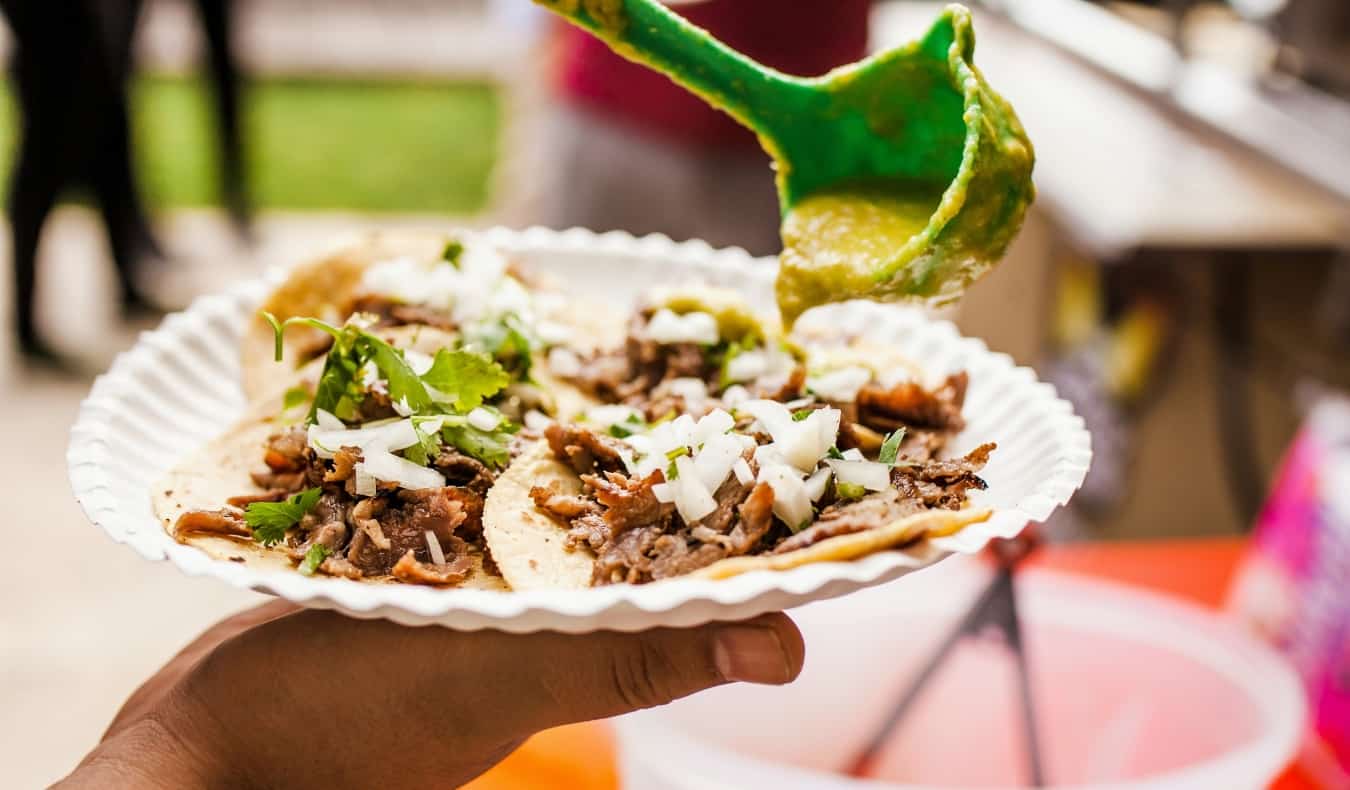
Traditional Mexican cuisine is so culturally rich and distinct (and delicious) that UNESCO has included it on its Intangible Cultural Heritage list. While you can certainly go on a self-led taco tour, you won’t learn nearly as much as you would by taking a food tour, an excellent way to get a crash course on local cuisine.
My friend Anais runs Devoured Tours, offering in-depth tours into the food scene of CMDX, with five different four-hour options to choose from. On each tour, you’ll meet a local “tastemaker,” an expert in their craft who shares the process behind Mexican gastronomic traditions like making mouthwatering tacos or crafting exquisite mezcal cocktails. Tours start at 1,625 MXN.
If you just want to eat all the tacos (who doesn’t), join Sabores Mexico Food Tours on its Tacos & Mezcal Night Food Tour. You’ll enjoy tacos at a mix of traditional and contemporary taquerias and end your night sampling in the first mezcal bar in Mexico City.
8. Sample Mezcal
I love mezcal. It’s is a traditional Mexican distilled spirit, crafted from agave, that’s renowned for its smoky flavor and complexity. I’ve learned a ton about it over the course of my visits to Mexico, but I’m always looking to try new flavors and dive deeper into the distilling process.
If you want to try mezcal and learn more about it, some unique places to sample it include La Mezcaloteca (a bar/library where you can do a tasting of five mezcals) and La Clandestina in Condesa (with 25 mezcals from all over the country)
At the Museum of Tequila and Mezcal near Plaza Garibaldi, knowledgeable guides will lead you through the intricate process of production, from harvest to distillation. You’ll also get to sample types of mezcal alongside different tequilas, so you can appreciate the differences between Mexico’s main two spirits. A ticket that includes tastings costs 340 MXN.
9. Float Along the Xochimilco Canals
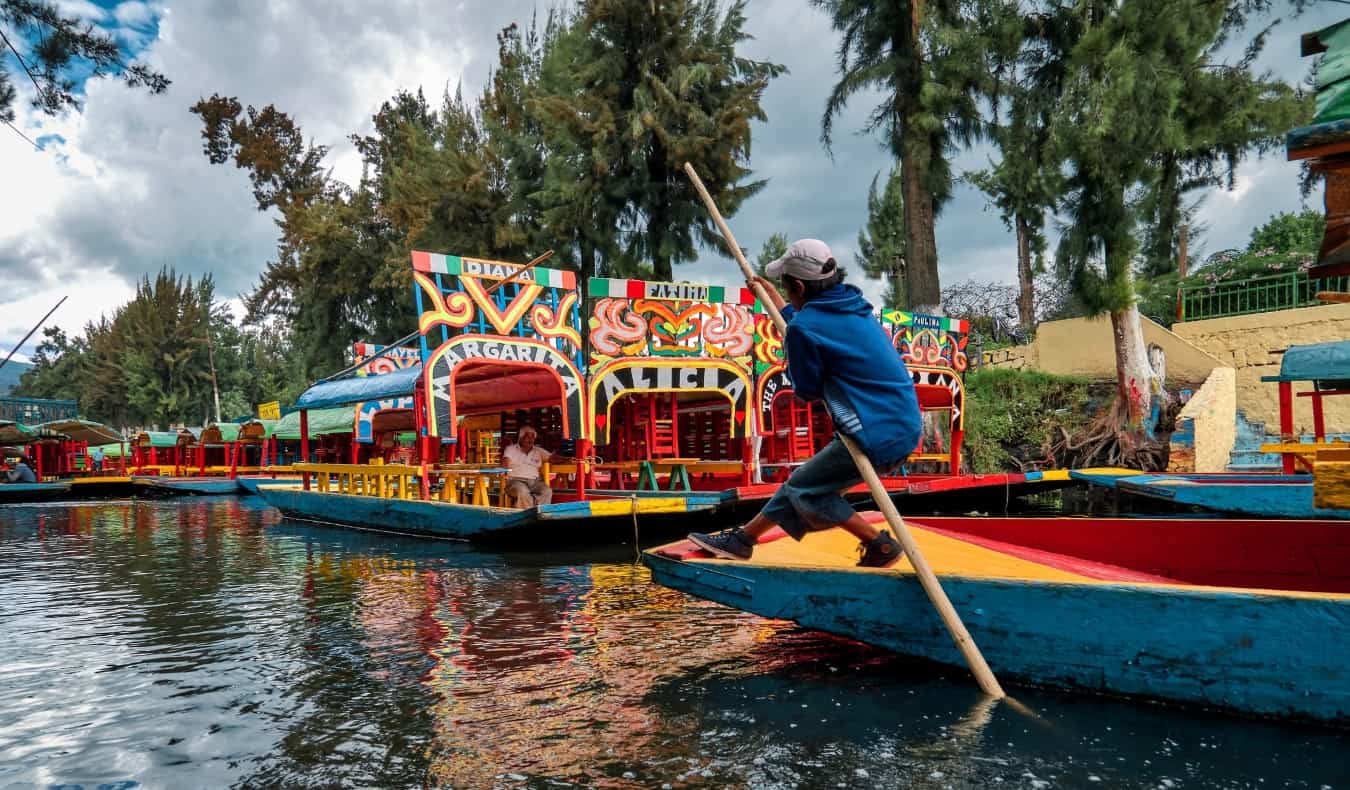
While the Xochimilco Canals are infamous for their party boats, complete with bottomless drinks, a kayak tour is a fun and different way to explore the enchanting waterways of this UNESCO World Heritage Site. On this tour, led by a knowledgeable local guide, you’ll paddle through the vibrant floating gardens, known as chinampas, witness the lively atmosphere of traditional trajineras (colorful boats), and appreciate the scenic beauty of the surroundings. All the while, you’ll get insights into the history and significance of Xochimilco and its canals. This was another really popular part of our tours and something most travelers don’t experience.
If you’re an early riser, you can even opt for a sunrise tour, during which you’ll get the waterways virtually to yourself. Tours start at 890 MXN.
10. Admire the View from Torre Latinoamericana
Torre Latinoamericana is an iconic skyscraper in the heart of Mexico City. Completed in 1956, it was once the tallest building in Latin America. Designed by architect Augusto H. Álvarez, the tower rises 183 meters (600 feet) and consists of 44 floors. (It has resisted numerous earthquakes, thanks to its innovative design featuring a stabilizing core.)
The tower offers panoramic views from its observation deck, giving a good perspective on just how massive the city is. It costs 200 MXN to visit the observation floor (get advance tickets here), but if you go to the bar on the floor just below, you’ll get the same view for the price of a drink.
Francisco I. Madero Avenue 1, +52 55 5518 7423, miradorlatino.com. Open daily 9am-10pm. Tickets are 200 MXN.
11. Wander the Zócalo

The Zócalo is the heart of Mexico City’s historic center. This massive square contains the ruins of Templo Mayor (the ancient Aztec temple complex), the Palacio Nacional (the president’s official residence), and La Catedral Metropolitana (constructed by the Spanish upon conquest of the area).
Originally the main ceremonial center in the ancient Aztec city of Tenochtitlán (located where Mexico City now stands), the Templo Mayor was destroyed to make room for the cathedral in 1521. In fact, the very stones that made up the temple were used to create the cathedral. You can now view ancient artifacts uncovered from the site, rediscovered in the 1970s, at the Museo del Templo Mayor (95 MXN to enter the museum and archaeological site).
When you’re done, head over to admire the stunning Spanish colonial architecture of the La Catedral Metropolitana. This 16th-century building dominates the northern half of the Zócalo and is free to enter. Inside, it’s incredibly ornate, with a floor that’s noticeably tilted thanks to the perpetual sinking of the city (due to its construction on a lake and swamp).
12. Relax in Chapultepec Park
Chapultepec means “Hill of the Grasshopper” in Nahuatl, the language of the Aztecs. Spanning 686 hectares (1,700 acres), this park in the heart of Mexico City is the second largest urban park in Latin America (the biggest is in Santiago, Chile). It’s one of the world’s most visited too, not only by visitors but locals, who love to set up shop grilling and picnicking on Sundays. You can also rent a rowboat or paddleboat and go out on Chapultepec Lake. Whenever I want to just relax and soak up the sun, this is where I go.
In addition to the countless paths to stroll, Chapultepec is home to a zoo and several important museums, including the Museum of Anthropology (mentioned earlier) and Chapultepec Castle (see below).
The park is divided into three sections. Section 1 houses most of the museums and is open Tuesday-Sunday 5am-6pm. Sections 2 and 3 are open 24/7, though like many city parks, it’s likely not the best idea to walk through it alone after dark.
13. Visit Castillo de Chapultepec
The only castle in North America to house monarchs, Chapultepec Castle was built in 1725 as a large manor house for the viceroy (the Spanish colonial administrator). Abandoned during the Mexican War of Independence in 1810, it later became the residence of Emperor Maximilian I and Empress Carlota in 1864, during the Second Mexican Empire (1864–67).
Today, you can visit the castle and meander through the magnificently decorated period rooms, manicured gardens, and terraces offering impressive panoramas. The castle is also home to the Museo Nacional de Historia (see below), which tells the story of Mexico from the time of Tenochtitlán to the Mexican Revolution.
Bosque de Chapultepec, Section I, +52 55 5256 5464, mnh.inah.gob.mx. Open Tues-Sun 9am-5pm. Admission 95 MXN.
14. Check out the art and history museums
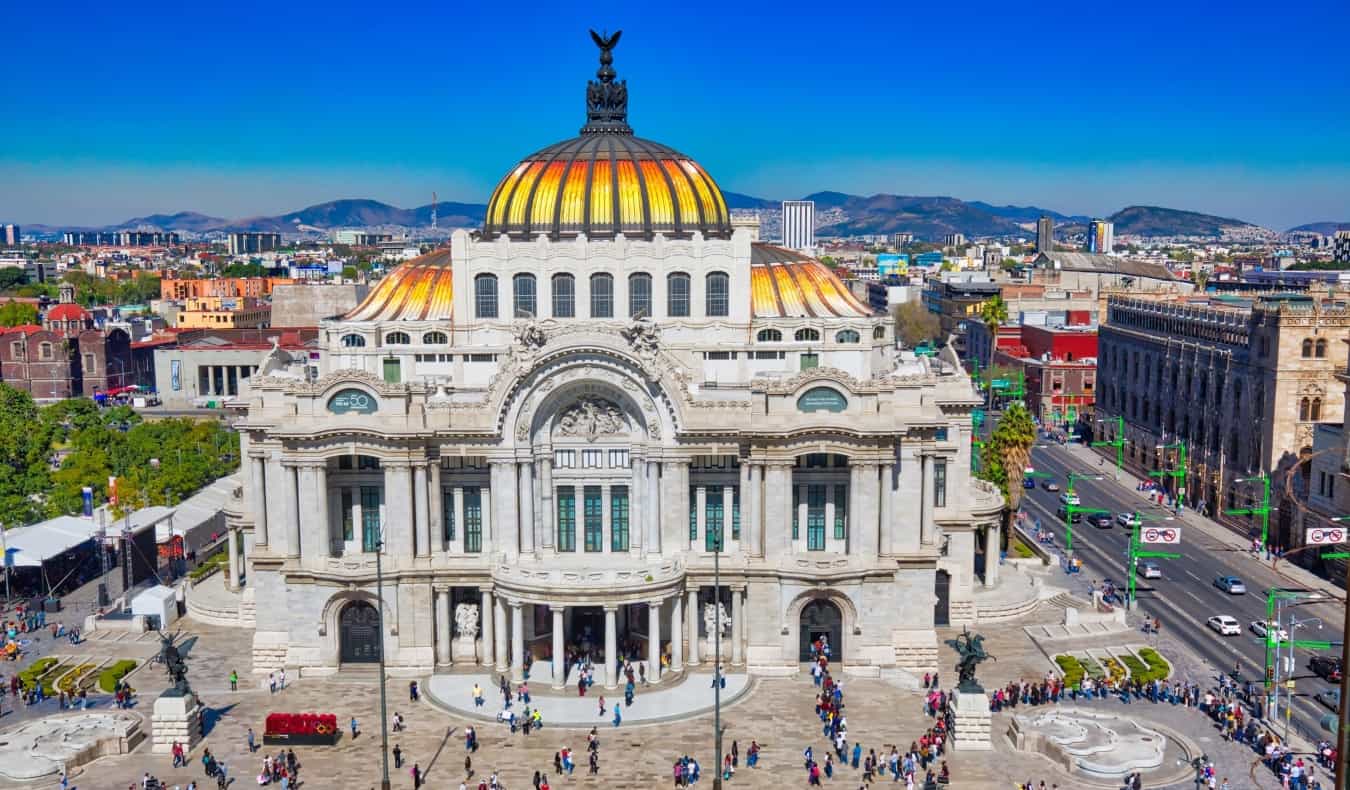
There are many museums and galleries in Mexico City. Worthwhile ones include the following:
- Palacio de Bellas Artes (Fine Art Museum): This impressive Art Nouveau building with an Art Deco interior is a massive cultural center that hosts performing arts events. Its various galleries include murals by Diego Rivera and rotating temporary exhibitions. It is also home to the Museum of Architecture.
- Museo Nacional de Historia (National History Museum): This museum, located in Chapultepec Castle, tells the history of Mexico over 12 permanent exhibition halls.
- Museo de Arte Moderno (Museum of Modern Art): Located within Chapultepec Park, this museum focuses on modern Mexican art. Its most famous piece is Frida Kahlo’s The Two Fridas.
- MUAC (University Museum of Contemporary Art of UNAM): This art museum on the university’s grounds also focuses on contemporary Mexican art, with video and sound installations, paintings, drawings, and more.
- Museo Nacional de Arte (National Art Museum): Mexican art from the mid-16th century to the mid-20th century is divided into three main time periods (colonial, post-independence, and post-revolution).
- Museo de Arte Popular (Folk Art Museum): This museum’s collection of Mexican folk art and handicrafts features traditional textiles, pottery, glass, piñatas, and alebrijes (brightly colored sculptures of fantastical creatures).
- Memory and Tolerance Museum: This newer museum tells the history of genocides and crimes against humanity, with a section promoting tolerance and inclusion of all groups of people.
- Tamayo Museum: Born out of the private collection of artist Rufino Tamayo, this museum concentrates on 20th-century international art (especially of the avant-garde variety).
Ticket prices vary, but generally range from free to 100 MXN.
15. Tour a Megalibrary
The Biblioteca Vasconcelos, located in the Buenavista neighborhood, is a temple to books, often referred to as a “megalibrary.” The largest library in the entire country, it opened in 2006, covers an incredible 38,000 square meters (409,000 square feet), and houses over 600,000 books.
But the real draw for the visitor is not in the collection (which, though large, isn’t particularly noteworthy) but the building itself. The architecture is stunning, featuring transparent walls, six intentionally mismatched floors, and sculptures by prominent artists. It also has a focus on sustainability, with rainwater collection barrels on the roof, windows designed to light almost the entire interior naturally (yet without harming the books), and a green roof covered in plants that keep the building cool.
Don’t miss popping around the back to stroll through the quiet and spacious garden filled with trees, shrubs, and herbaceous plants. Admission is free.
16. Marvel at the Soumaya Museum
Housing 66,000 pieces of Central American and European art, the Soumaya Museum displays works not only by Mexican artists such as Diego Rivera and Rufino Tamayo but also by famous masters such as Botticelli, Dalí, and Rodin. The museum was donated and constructed by one of the world’s richest men, Carlos Slim Helú (a Mexican business magnate). The Soumaya is a stunning piece of art on its own, as it is covered in 16,000 hexagonal aluminum tiles that sparkle in the sunlight. It’s considered the most beautiful modern building in Mexico City. Admission is free.
Blvd. Miguel de Cervantes Saavedra. +52 55 1103 9800, www.museosoumaya.org/. Open daily, 10:30am-6:30pm. Free entry.
17. Escape to the UNAM Botanical Garden
If you’re seeking a temporary escape from the hustle and bustle of Mexico City, look no further than the Botanical Garden at the National Autonomous University of Mexico (UNAM). Rooted in Aztec traditions that valued gardens for both medicinal and ornamental purposes, this sanctuary also emphasizes conservation and environmental education. It’s situated around lava formations from the Xitle volcano eruption, and the paths meander through naturally formed grottoes and past waterfalls and ponds teeming with koi and turtles.
The plants you can admire here include the world’s most diverse cactus collection, with 800 different varieties; there’s also an orchidarium and a medicinal garden. This is also a habitat for wildlife: keep an eye out for woodpeckers, owls, hummingbirds, rattlesnakes, lizards, and the Pedregal tarantula, a species exclusive to this small area of Mexico City.
University City, Coyoacán. +52 56 22 90 63. www.ib.unam.mx/ib/jb/. Open Monday-Friday, 9am-5pm, Saturdays from 9am-3pm. Admission is free.
18. Stroll Around Roma and Condesa
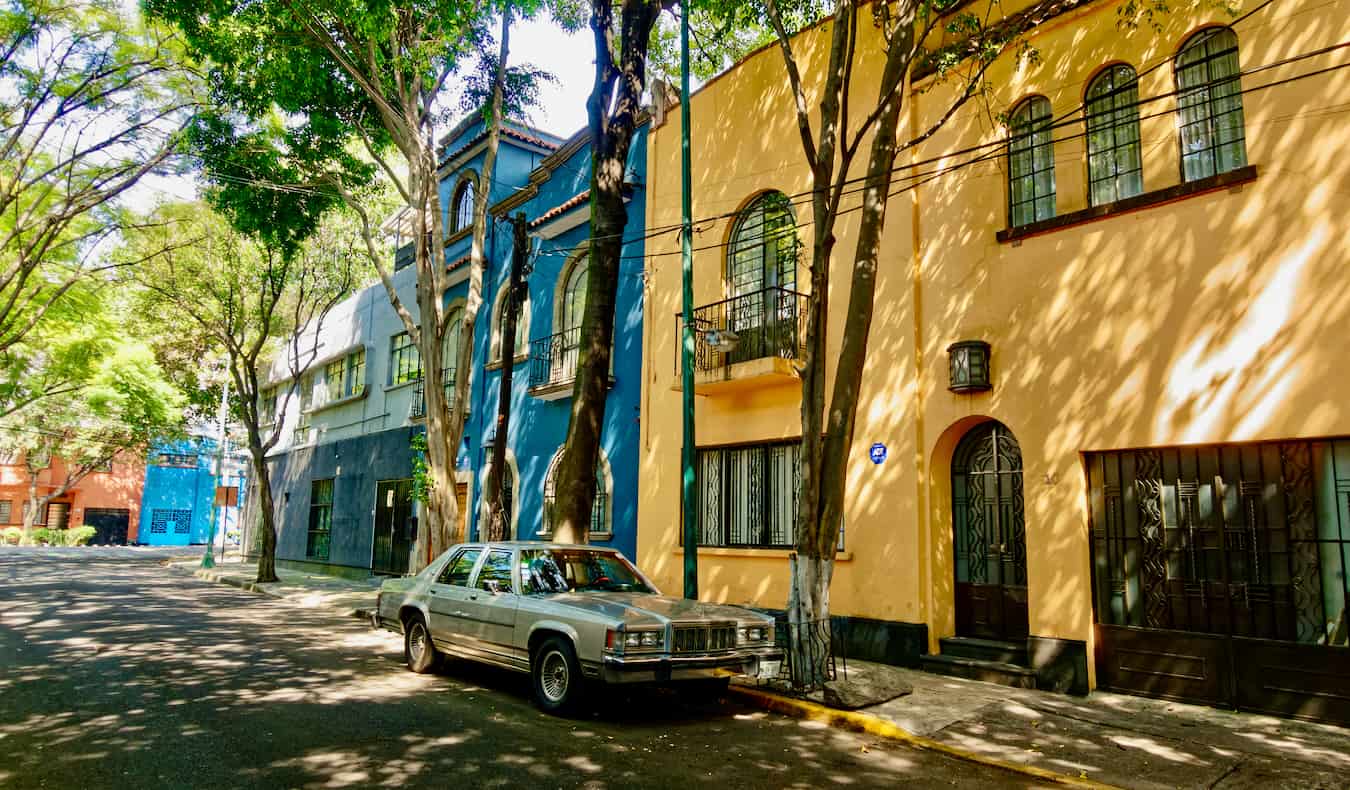
Roma and Condesa, two adjacent neighborhoods in the heart of Mexico City, are worth spending some time exploring (they’re also some of the best neighborhoods to stay in). They bleed into each other a bit, as both have leafy, tree-lined avenues, trendy boutiques, and an eclectic array of cafés, restaurants, bars, and mezcalerías.
Roma is renowned for its bohemian atmosphere, European-inspired architecture, and colorful street art. Condesa is a bit more laid-back, high-class, and refined, featuring Art Deco buildings and lots of sidewalk cafés. Parque México and Parque España are iconic green spaces that divide the two neighborhoods and are perfect places to sit and people-watch for a bit.
19. Visit a Pueblo Mágico
The pueblos mágicos (magical towns) are towns and villages that the Mexican government has recognized for their cultural, historical, and natural significance. To be so designated, a place must meet specific criteria, including having historical and cultural richness and unique architecture, traditions, and folklore. These towns often feature well-preserved colonial architecture, lively cultural traditions, and a welcoming atmosphere.
While they are scattered all across the country, there’s one located just over an hour from Mexico City: Tepotzotlán.
Known for its beautiful colonial architecture, cobblestone streets, vibrant murals, and hikes to sacred sites in the surrounding mountains, it makes for a fun day trip, or if you have the time, even an overnight. There are buses that go to Tepotzotlán from Taxqueña (Mexico City’s southern bus station) every 30 minutes. A ticket is 184 MXN.
20. Offbeat Things to Do in Mexico City
There are lots of unconventional things to see and do that a lot of visitors don’t experience. Here are a few suggestions of some of my favorites:
- Palacio de Correos de México: This beautiful post office is a fascinating mix of architectural styles, including Art Nouveau, Art Deco, Gothic Revival, and others. There’s a free museum on the ground floor featuring various elements of the post office’s history, including a huge mural made entirely of stamps!
- Ballet Folklórico de México: This renowned folk-dance ensemble showcases traditional Mexican dance and music. Their permanent home is the Palacio de Bellas Artes, where tickets start at 1,200 MXN.
- Museo del Objeto del Objeto (Museum of the Object of the Object): This quirky museum is dedicated to everyday objects, showcasing the evolution of design and consumer culture in Mexico. Free admission.
- Museo del Chocolate: Learn about the importance and cultivation of cacao throughout Mexico’s history. There’s also an attached café, where you can sample chocolates in plenty of different forms. Museum admission is 80 MXN.
Mexico City is one of the world’s greatest metropolises. From iconic landmarks like the historic Zócalo and the majestic Teotihuacán pyramids to the vibrant markets, diverse neighborhoods, and thriving culinary scene, it is utterly captivating. No matter how long you have here, these things to do will keep you busy and ensure that you have an amazing visit.
Book Your Trip to Mexico City: Logistical Tips and Tricks
Book Your Flight
Use Skyscanner to find a cheap flight. They are my favorite search engine because they search websites and airlines around the globe so you always know no stone is left unturned!
Book Your Accommodation
You can book your hostel with Hostelworld as they have the biggest inventory and best deals. If you want to stay somewhere other than a hostel, use Booking.com as they consistently return the cheapest rates for guesthouses and cheap hotels.
If you’re looking for a place to stay, here are my favorite hostels in Mexico City.
This post can help you pick the best neighborhoods to stay in.
Don’t Forget Travel Insurance
Travel insurance will protect you against illness, injury, theft, and cancellations. It’s comprehensive protection in case anything goes wrong. I never go on a trip without it as I’ve had to use it many times in the past. My favorite companies that offer the best service and value are:
Looking for the Best Companies to Save Money With?
Check out my resource page for the best companies to use when you travel. I list all the ones I use to save money when I’m on the road. They will save you money when you travel too.
Want More Information on Mexico City?
Be sure to visit our robust destination guide to Mexico City for even more planning tips!
Source link

:max_bytes(150000):strip_icc()/TAL-cincinnatti-LIVEOH0424-732cfba728e04925bcb9c25432e79686.jpg)
:max_bytes(150000):strip_icc()/tl-best-hiking-deals-tout-de042697b45a4c28be404f67772c4e7e.jpg)
:max_bytes(150000):strip_icc()/roundup-fashion-item-under-50-tout-43eebfdde46942ddb93b1cbc0ac8c106.jpg)
:max_bytes(150000):strip_icc()/cross-retailer-comfy-athelisure-loungewear-tout-64545a79676544fdaff5d4f6e99ddeff.jpg)